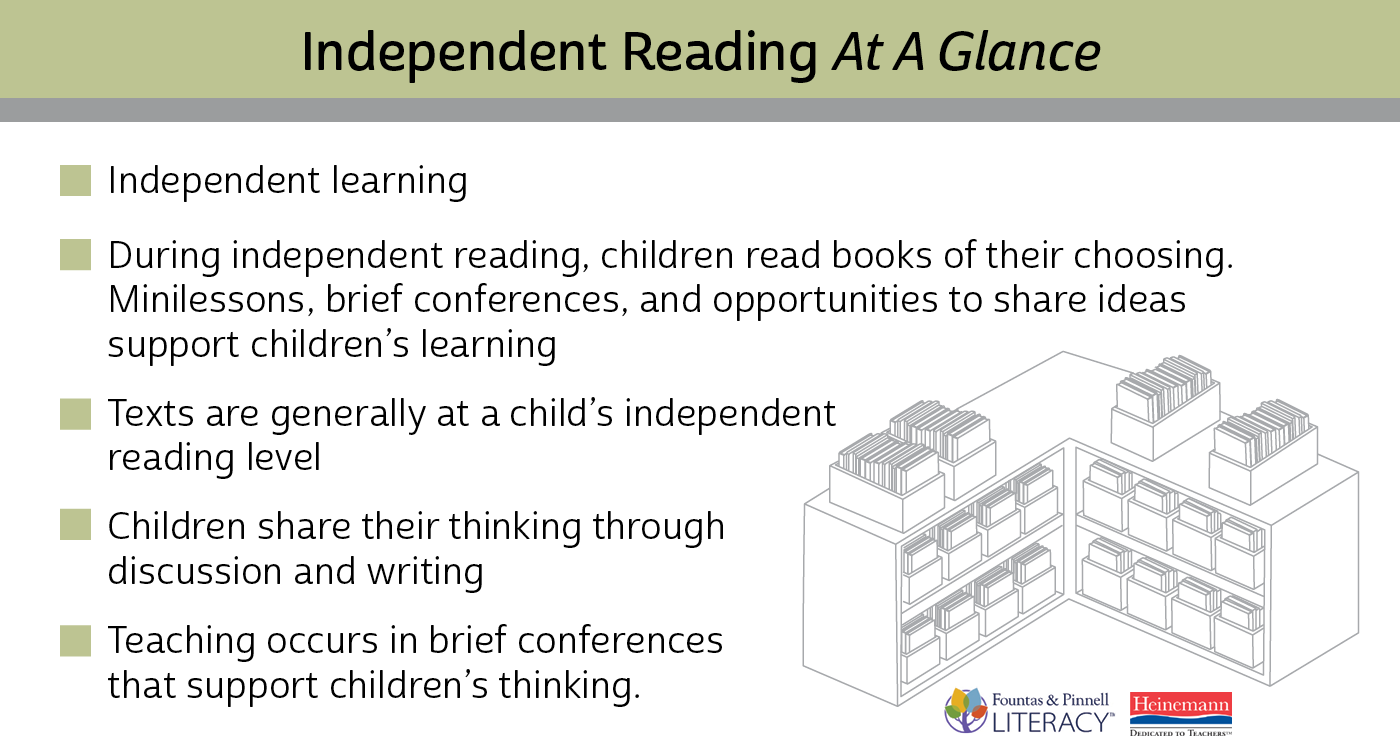
*Effective reading instruction involves a combination of powerful instructional settings. This post is the next in our "What is...?" series, where we define each instructional context that makes up a coherent literacy system.
What is independent reading?
During independent reading, students read books of their choosing for a sustained period of time. Minilessons, brief conferences, and opportunities to share thinking support students' engagement with books and increase their competencies.

Why is independent reading important?
As an instructional context, independent reading:
- Offers the opportunity to develop habits, attitudes, and tastes as a reader
- Builds students' mileage and stamina as readers
- Allows students to exercise full control of the reading process
- Provides opportunities to share thinking about books with other readers through discussion and writing about reading
- Allows readers to apply independently what they have learned through whole-group minilessons, guided and shared reading lessons, and book clubs.
"A key factor of independent reading is choice." – Irene C. Fountas and Gay Su Pinnell

What does independent reading look like?
Each reader selects a book from a rich, well-organized collection of books in the classroom. Books are not organized by level in your classroom library but, rather, according to categories such as author, illustrator, theme, series, genre, etc. Students are free to choose any text for independent reading based on their personal interests, though you support learning how to make good choices through individual reading conferences and whole-group minilessons. Students share their thinking through discussion and writing, as you come alongside readers to support thinking through brief conferences.
Supporting student choice:
- Book Talks – Introduce new books through very brief book talks as you add them to your classroom library collection. Your short introduction may include talking about the writer, illustrator, and genre; providing a brief "teaser" of the plot or interesting facts; and showing a few particularly engaging illustrations.
- Reading Minilessons – Short minilessons on the topic of choosing "just-right" books for independent reading can be valuable for your whole class at the beginning of the year. These minilessons, which are provided for you in The Reading Minilessons Book, can help children learn and apply techniques for choosing books, such as reading a little of a book at the beginning and in the middle and then asking themselves, Am I interested in the topic or the kind of story? Did I understand it? Were there too many difficult words? Can I read it smoothly?
- Independent Reading Time – Students choose the books they want to read. They then read silently or, for emergent readers, very softly. Students also write and draw about their reading in a reader's notebook.
- Conferring with Individual Students – The goal of conferring is to listen to a student's responses to a book and to promote further thinking. During the conference, you may listen to a student read, teach for specific strategic actions, talk about an entry the student made in a reader's notebook, and more. The conference enables you to understand how a reader is processing a text and provide customized instruction that will help the individual student refine and extend his reading competencies.
Opportunities for independent reading in the classroom:
- Self-select books to read from the classroom library
- Revisit books read during Interactive Read-Aloud
- Revisit books read during Shared Reading
- Reread books read during Guided Reading
- Read interactive writing, shared writing, and poems displayed in the room
Independent reading offers the opportunity for students to develop tastes as readers and to read a large number of self-selected books on their own. It is as students read, enjoy, and interact with texts that they choose that they will become lifelong readers.
To learn more about the Fountas & Pinnell Classroom™ Independent Reading Collection, click the link below.
Check out the entire "What is?" blog series:


